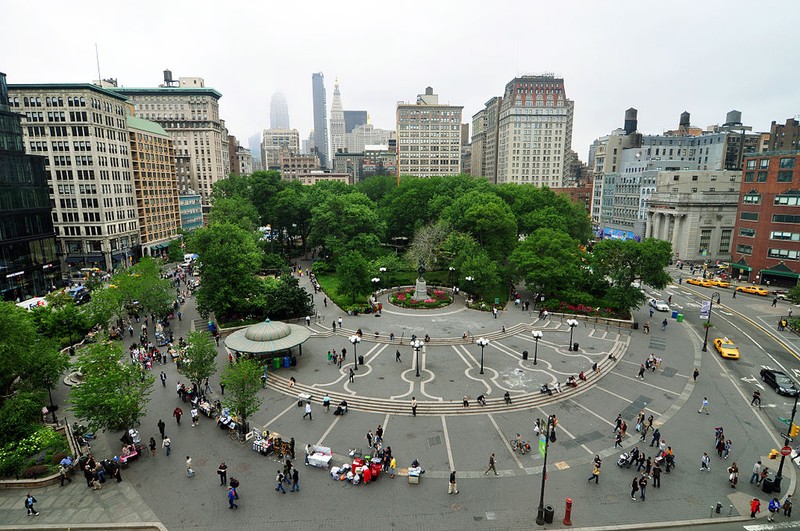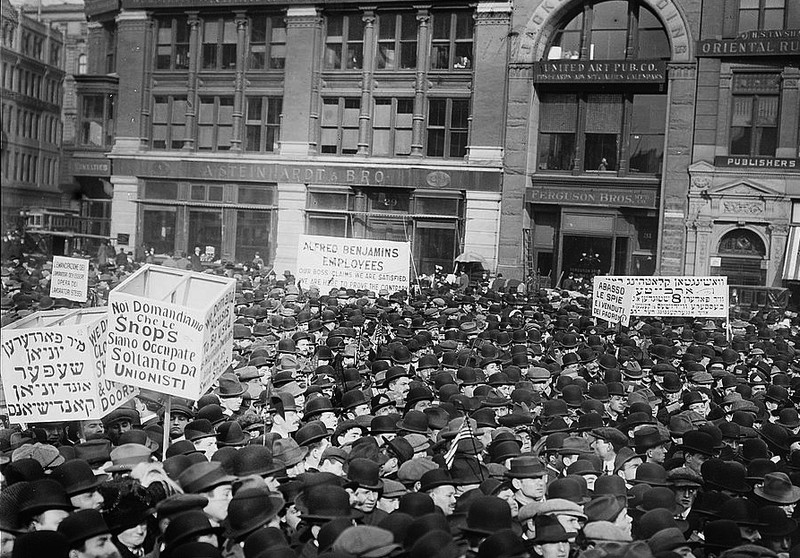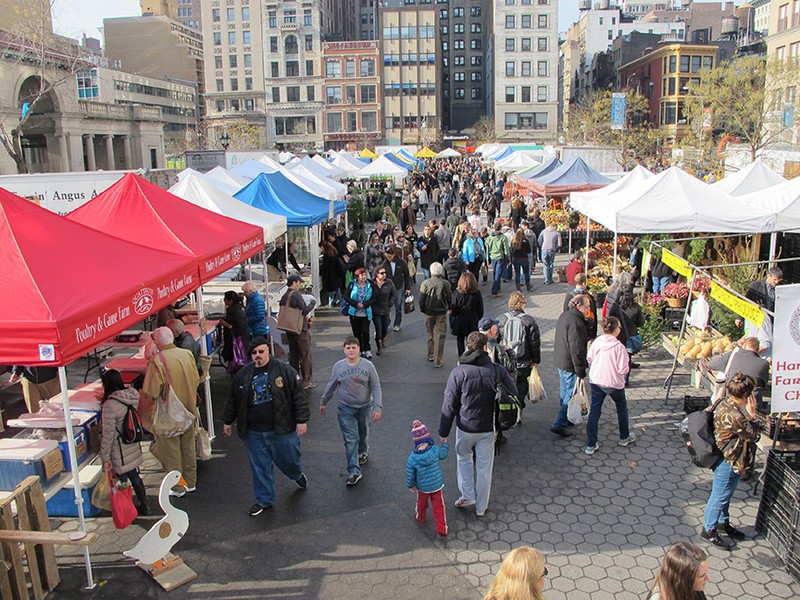Union Square Park
Introduction
Text-to-speech Audio
Images
An aerial view of Union Square Park looking north from 14th Street

Striking workers and their supporters hold a protest in Union Square Park calling for better working conditions on May 1, 1913

The Union Square Greenmarket

Backstory and Context
Text-to-speech Audio
Prior to the nineteenth century, what is now Union Square Park was a potter’s field, a burial site for the remains of paupers, the unknown, and the unclaimed. When the Commissioners’ Plan of 1811 was implemented, the land became known as Union Place, so named because of its location at the intersection (or union) of Bloomingdale Road (now Broadway) and Bowery Road (now Fourth Avenue). Two decades later, in 1831, the state legislature designated it a public place and two years later, in 1833, the City of New York acquired the land. In 1839, it opened as a public park. Originally, the park featured a large central fountain and was enclosed by an iron picket fence. In 1872, renowned landscape architects Frederick Law Olmsted and Calvert Vaux redesigned the park. In an effort to accommodate mass gatherings, they removed the iron picket fence, widened the walkways, carved out a muster ground, and constructed a reviewing stand. In the late 1920s, due to subway construction, the park was entirely demolished, but was reconfigured and reopened soon after. In the 1970s, Union Square Park fell into disrepair and became a popular gathering place for drug dealers. In response, during the administration of New York City mayor Ed Koch, the park underwent major renovations. A new plaza at its south end was constructed and new lighting was installed. In the 1990s, two playgrounds and a restaurant were added.
Union Square Park holds significance to the history of the labor movement in the United States. On September 5, 1882, workers across New York City celebrated the very first Labor Day with a picnic, speeches, and a parade of 10,000 people that began at City Hall and ended in the park. Twelve years later, President Grover Cleveland signed a bill into law that made Labor Day a national holiday. After the tragedy at the Triangle Shirtwaist Company factory in 1911, mourners held a funeral procession at the park for those whose remains could not be identified. From the late nineteenth century until after the Second World War, labor unions, including the Industrial Workers of the World (IWW), sponsored innumerable May Day rallies and parades at the park. In 1997, due to its significance to American labor history, the United States Department of the Interior designated the park a National Historic Landmark.
Today, the park is home to several monuments, in addition to a tremendously popular open-air market. At the southern end of the park you will find an impressive bronze equestrian statue of George Washington designed by sculptor Henry Kirke Brown. Installed in 1856, it is the oldest sculpture in the collection of the New York City Department of Parks and Recreation. At the park’s northern end proudly stands another of Brown’s works, a bronze statue of Abraham Lincoln dedicated in 1870. A bronze statue of the Marquis de Lafayette, designed by Frederic Auguste Bartholdi and dedicated in 1876, resides on the eastern edge of Union Square Park. A bronze statue of Mohandas Gandhi, dedicated in 1986, is located at the park’s western edge. Established in 1976, the Union Square Greenmarket, located at the northern end of the park, offers visitors a variety of fresh meats and produce, along with a large selection of baked goods, preserves, flowers, and household goods.
Cite This Entry
Tanner, Michael and Francis Curran. "Union Square Park." Clio: Your Guide to History. January 16, 2021. Accessed April 18, 2025. https://theclio.com/tour/104/1
Sources
Pommer, Alfred and Joyce Pommer. Exploring Gramercy Park and Union Square. Charleston, SC: The History Press, 2015.
"Union Square Park." New York City Department of Parks and Recreation. The City of New York. Web. 7 January 2021 <https://www.nycgovparks.org/parks/union-square-park/history>.
https://thecleverroot.com/a-holistic-marketplace/#.X_kFui2ZNQI

